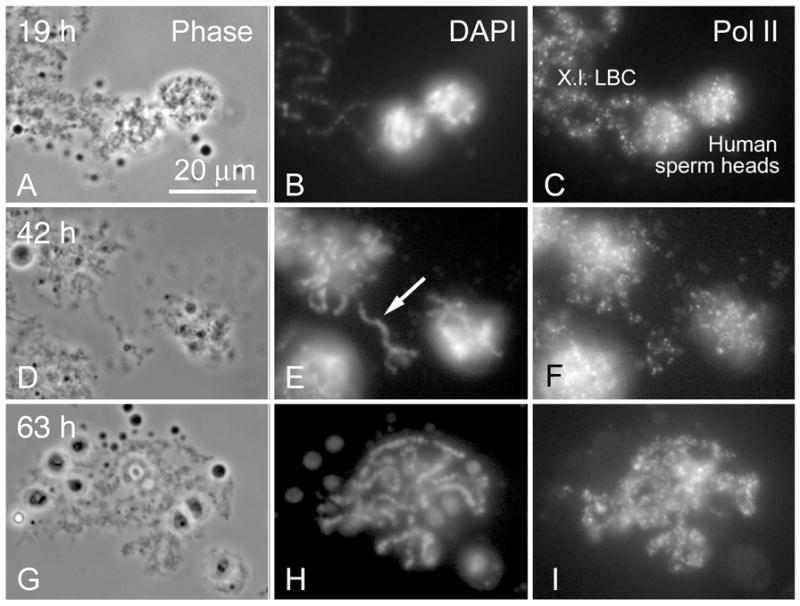Fig. 1.

Expansion of human sperm heads injected into the X. laevis GV. a–c Two sperm heads 19 h after injection have swollen and begun to take up pol II. To the left of the sperm heads is part of one endogenous Xenopus LBC. The DAPI stain is much brighter in the human sperm heads, because each contains a complete haploid chromosome set (3.5 pg DNA). The entire endogenous X. laevis LBC set contains roughly 4X as much DNA but spread over 18 extended bivalents. d–f Three sperm heads 42 h after injection are slightly more swollen. An occasional chromosome (arrow) can be found separate from the clusters. g–i A single sperm head 63 h after injection has now resolved into a group of separate chromosomes, presumably the haploid number (23) of univalent chromosomes. Although the chromosomes are covered with pol II, individual transcription loops are not readily visible.
